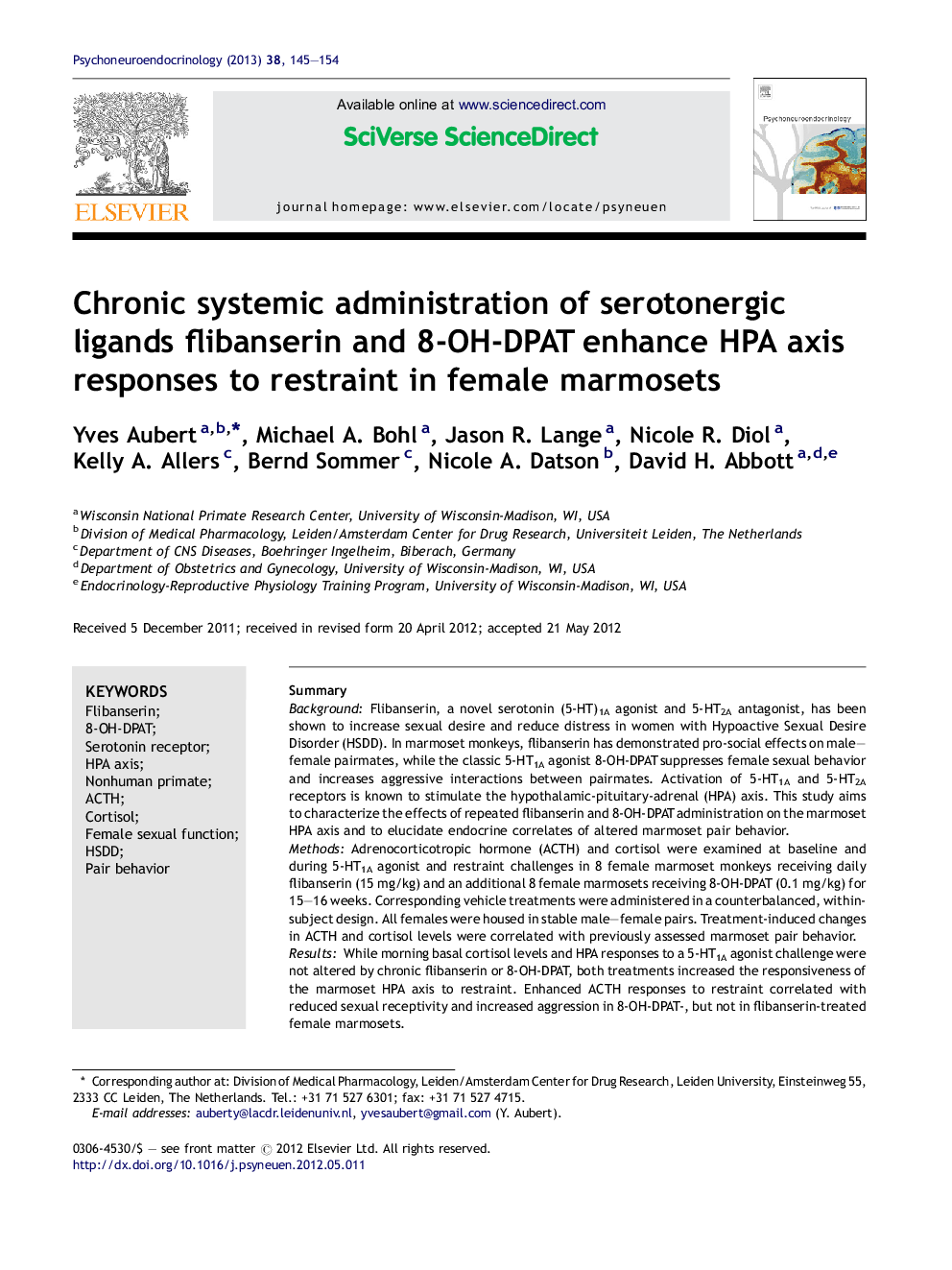| Article ID | Journal | Published Year | Pages | File Type |
|---|---|---|---|---|
| 10305877 | Psychoneuroendocrinology | 2013 | 10 Pages |
Abstract
Unaltered HPA responses to a 5-HT1A agonist challenge after chronic flibanserin and 8-OH-DPAT treatments indicate little or no de-sensitization of the HPA axis to repeated 5-HT1A manipulation. Chronic 8-OH-DPAT, but not flibanserin, leads to aggravated ACTH responses to stress that may contribute to anti-sexual and anti-social behavior between 8-OH-DPAT-treated females and their male pairmates. Despite similar flibanserin and 8-OH-DPAT induced ACTH responses to restraint stress, flibanserin-treated females show unchanged cortisol profiles. This is possibly due to flibanserin's regional selectivity in 5-HT1A activation and concurrent 5-HT2A inhibition. The contrasting restraint-related cortisol responses emulate contrasting behavioral phenotypes of diminished pair-bond of 8-OH-DPAT-treated females compared to the more affiliative pair-bond of flibanserin-treated females.
Keywords
Related Topics
Life Sciences
Biochemistry, Genetics and Molecular Biology
Endocrinology
Authors
Yves Aubert, Michael A. Bohl, Jason R. Lange, Nicole R. Diol, Kelly A. Allers, Bernd Sommer, Nicole A. Datson, David H. Abbott,
